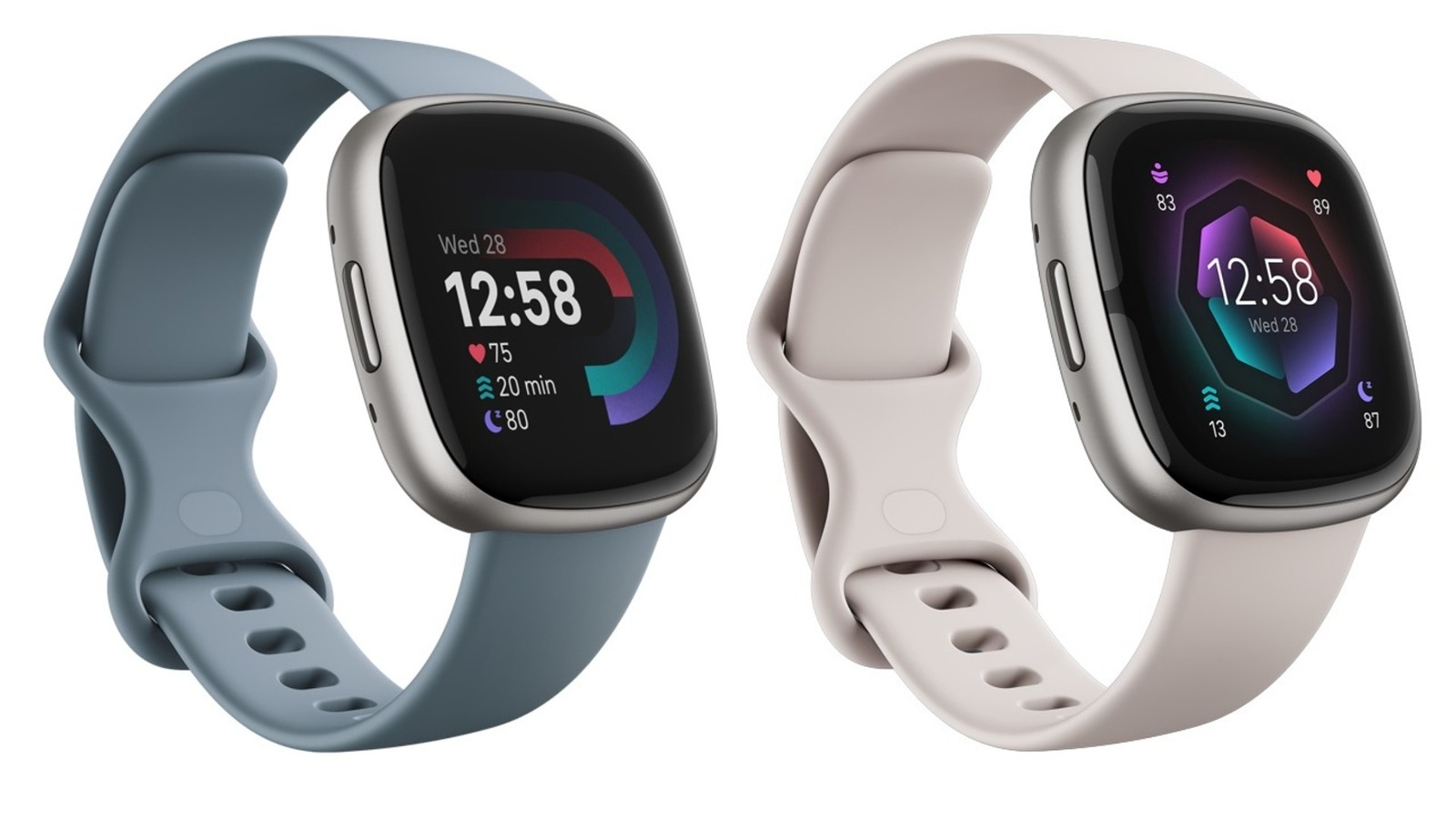Fitbit has been an industry player since it launched its first device back in 2009. According to BusinessOfApps.com, it’s estimated that Fitbit garnered around $1 billion in earnings in 2023. As of summer 2024, the fitness tracker company was the second most used brand behind Apple, with 25% surveyed utilizing a Fitbit device, per Statista. We ranked every major smartwatch brand from worst to best, and Fitbit was among the top options available, specifically due to its Versa and Sense models.
Advertisement
While Fitbit offers a range of products, two models, in particular, the Versa 4 and the Sense 2, have attracted attention from consumers looking for fitness-tracking wearables or smartwatches. While both smartwatches come equipped with a variety of features that can help you along in your fitness journey, they look almost identical (at first glance), creating some confusion.
Visually, each device is available in a variety of color schemes, but each offers unique options, with the Sense 2 also featuring more metal in its design. Both devices include tools like a heart rate monitor, blood oxygen sensor, and GPS. However, the more expensive Sense 2 includes a few extras that pertain to stress management, skin temperature, and heart rhythm monitoring.
Advertisement
Versa 4 vs Sense 2 smartwatch design
In terms of visual looks, both the Versa 4 and Sense 2 look almost identical upon first inspection, with nearly the same size display and a physical side button. The Sense 2 is slightly larger but only by .1 mm, making the difference virtually imperceptible. However, depending on which Fitbit device you choose, you’ll have a distinct series of color options that aren’t shared across models.
Advertisement
For example, the Versa 4 features more vibrant choices, like pink sand with copper rose aluminum, whereas the Sense 2 offers a more muted pallet of colors, like shadow grey with graphite aluminum.
If you look closely around the edges of the Sense 2 display face, you’ll notice metallic bezel accents that aren’t present on the Versa 4. This is a minor visual enhancement that adds a bit more of a premium aesthetic; however, unless you’re specifically looking for it, the addition could easily go unnoticed. While typically unseen, the back of these smartwatches differs in one aspect: additional metal around the sensors. The Sense 2 includes some metallic surfaces not found on the Versa 4, which is likely a component for additional sensing functionality.
Advertisement
Tools for managing stress
Both Fitbit devices offer a stress management score with their premium plan subscriptions, which use various sensor readings throughout the day to measure how effectively you deal with stress. They also include additional tools like a guided breathing app and a way to document your mood, helping to identify situations that elevate your stress response. However, the Sense 2 goes even further with an electrodermal activity (EDA) scanner that registers changes in your sweat level.
Advertisement
According to Fitbit, a response to stress is often a release of microbursts of perspiration, which the Sense 2 can monitor. It then displays changes in your body’s response via a timeline display indicating when and for how long you showed signs of stress. It can also notify you when a stressful event is registered by the cEDA sensor. While the Versa 4 can provide an overall stress management score, the Sense 2 continually scans throughout the day, providing much more in-depth stress management tools, which are useful for making healthy adjustments in your daily life. It’s worth noting that the cEDA sensor in the Sense 2 may drain power more quickly with regular use, so you may want to consider these tips to extend your Fitbit device’s battery life.
Advertisement
Heart health apps & ECG
Both these Fitbit devices come equipped with heart rate monitors, which can detect variations in your heart rate to identify trends, indicate personal data like your resting pulse, and notify you of activity outside your normal range. The Sense 2 goes a step further with an ECG app that can help detect unusual heart rhythms, signaling a possible case of Atrial Fibrillation (AFib). AFib is a condition where the heart beats inconsistently and could raise your risk of heart failure, stroke, or other heart-related problems, per the Mayo Clinic.
Advertisement
The ECG app allows you to test your heart rhythm whenever or however often you’d like. After selecting the app, you place your index finger on the upper right-hand corner and your thumb on the lower left-hand corner of the display. After holding still with your finger and thumb in contact with the Sense 2 for 30 seconds, it notifies you whether the data collected is normal or indicates an issue. This data can then be shared with a medical provider if you notice irregularities during testing.
Skin temperature sensing and reading
The Versa 4 includes a feature that detects changes to the temperature of your skin but only provides a daily variation figure. The Sense 2 provides an enhanced version using a dedicated skin temperature sensor and also provides more data on the Fitbit smartphone app. This allows you to review changes to skin temperature over an extended period. While either device will provide you with some information about skin temperature, the Sense 2 has the most expansive coverage.
Advertisement
It may not be a feature to get terribly excited about, though. The relationship between skin temperature and health isn’t completely clear. Some science supports the idea that a lower skin temperature may indicate an issue with circulation, whereas normal skin temperature indicates the heart is working fine. Fitbit asserts that variations in skin temperature are related to exercise, diet, and other factors that could identify changes in the body.
Which Fitbit smartwatch is right for you?
There are a few considerations when determining which Fitbit device you should buy. If you’re looking for the more affordable option, the Versa 4 retails for $198.49 on major online retailers, a full $50 cheaper than the Sense 2. The Versa 4 is a great option for those who want the advantages of a health and fitness tracker built into their smartwatch but don’t necessarily need all the bells and whistles.
Advertisement
If you take advantage of additional features like the ECG, dedicated skin temperature sensor, and expanded stress management tools, the extra cost of the Sense 2 may be worth it. If you are more concerned with statistics and analyzing data to identify patterns, trends, and outliers, then the Sense 2 is definitely the better option. However, if you’re just looking to get into shape and want something to count your steps and your heart rate, the Versa 4 should be more than enough. But why stop at a Fitbit smartwatch when you could take advantage of other innovative tech items for fitness in 2024?







